Only $99 for a full year!
No credit card required
Rank on Google's first page in 3 months
How to Use HARO for Effective Link Building
Jul 10, 2023 | user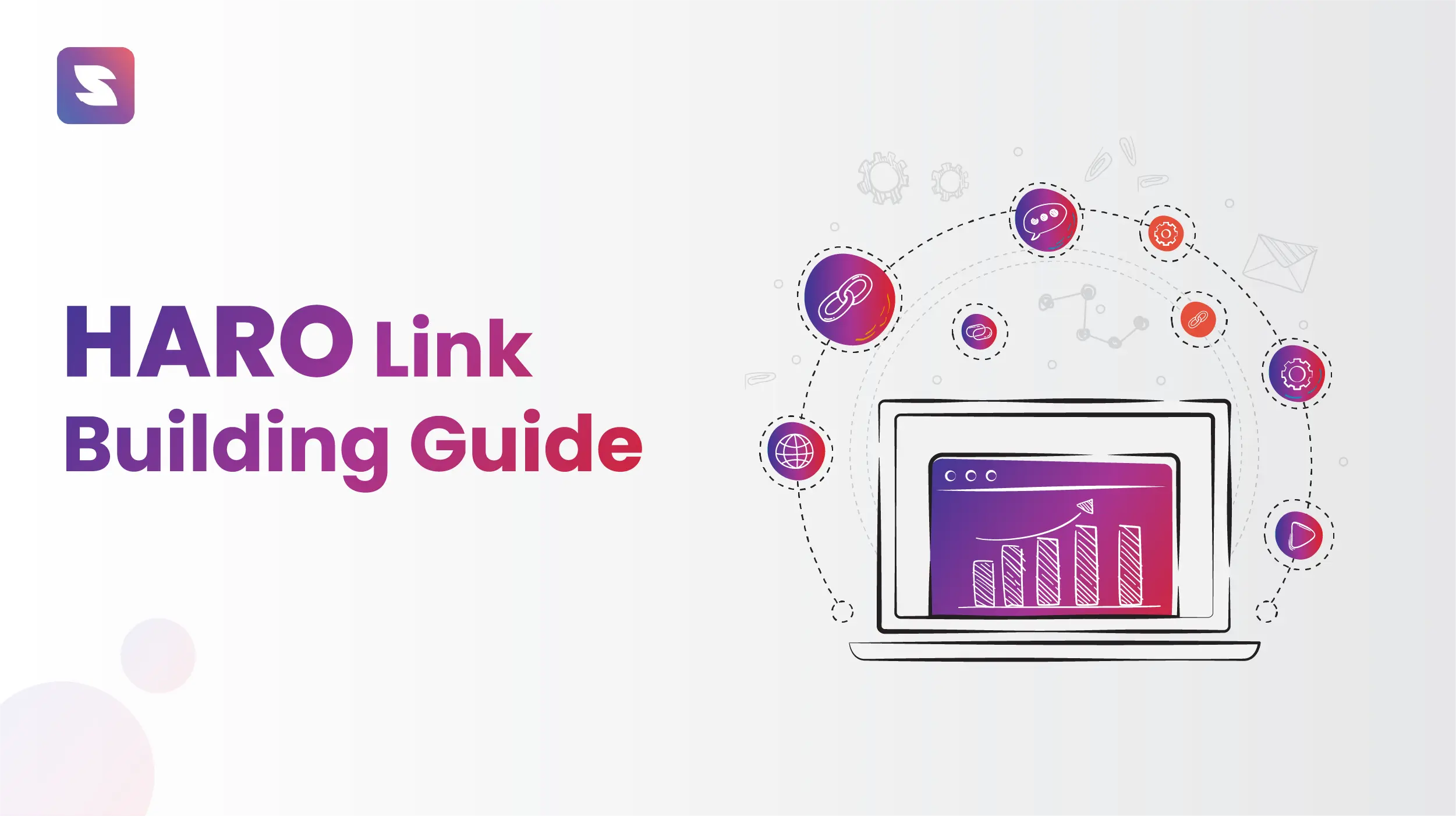
Are you a digital marketer or SEO expert looking for ways to build quality backlinks for your website? If so, look no further than using the power of Help A Reporter Out (HARO).
HARO is useful in helping you get your site linked to major publications and can help boost visibility and search engine rankings.
In this blog post, we’ll be breaking down what HARO is all about and offering tips on using it as part of an SEO strategy effectively. We will also provide examples of successful link-building campaigns that used HARO.
So if you’re ready to succeed in link-building through the power of HARO—read on!
What Is HARO?
HARO is a platform that connects reporters and sources. It was created in 2008 by Peter Shankman, a public relations specialist. He wanted to make it easier for journalists to find quality sources to get content for their articles.
But for marketers, this tool provides an opportunity to build backlinks. They can connect with the right media outlets and create content that is valuable enough to be featured in the outlet’s stories. Ergo, attaining backlinks to their website as well.
For each link-building campaign, users can submit their proposals by responding to specific queries posted by reporters on HARO. So, it’s vital for marketers to pay attention to these requests and create pitches or content that resonates with what the reporter is looking for.
This way, they can get their content featured in the outlet’s story and generate quality backlinks to their website.
Importance of Link Building
Link building is an essential aspect of SEO that cannot be overlooked. It involves acquiring backlinks to your website from other reputable websites.
In fact, it is a ranking factor used by search engines like Google. The number of backlinks is quantified to evaluate the quality and relevance of a website before ranking it on search results. Following are some of the reasons why link-building is important.
- The more high-quality links you have, the more the chances of getting ranked on SERP.
- Backlinks from authoritative websites can drive substantial referral traffic to your site.
- Link building can improve brand visibility as your website gets featured on more platforms.
- Backlinks help search engine bots discover and index your web pages more quickly.
A well-executed link-building campaign can help contribute to the overall growth of your business. Now let’s see how HARO SEO helps you here.
How HARO aids in Link Building?
HARO functions on a simple principle: journalists need credible sources for their stories, and businesses need exposure. When these two intersect, there lies a valuable opportunity for link-building. Here’s how HARO facilitates link building:
Access to Quality Opportunities
HARO sends outsourcing requests from journalists and bloggers from various outlets. This includes high-authority websites. As a result, it provides a multitude of opportunities for businesses to earn backlinks from reputable sources.
Exposure to Relevant Niches
The source requests are categorized based on the industry or topic. Thus it allows businesses to respond to requests directly related to their field.
By contributing valuable insights to these requests, businesses position themselves as authorities in their respective niche. Doing so leads to more link-building opportunities down the line.
Mutually Beneficial Relationships
By responding to a source request, businesses provide journalists with valuable information for their articles, and in return, journalists offer backlinks to the businesses’ websites. This symbiotic relationship not only aids in link-building but also helps develop lasting relationships with journalists and media outlets.
Brand Credibility and Visibility
When a business is cited as a source in a well-known publication, it enhances its brand credibility and increases visibility. This improved online reputation can attract more organic traffic and boost SEO.
Cost-Effective Strategy
Compared to other link-building strategies, using HARO is cost-effective. It only requires time and expertise to craft compelling responses to source requests.

Now that we have understood how HARO can help with link building, let’s understand the process behind it.
Step-by-Step Guide to Using HARO
Step 1 – Sign Up
Click on the button – I’m a Source – and sign up for a free account on the HARO website.

Step 2 – Set Preference
Once you sign up, you can set your preferences.
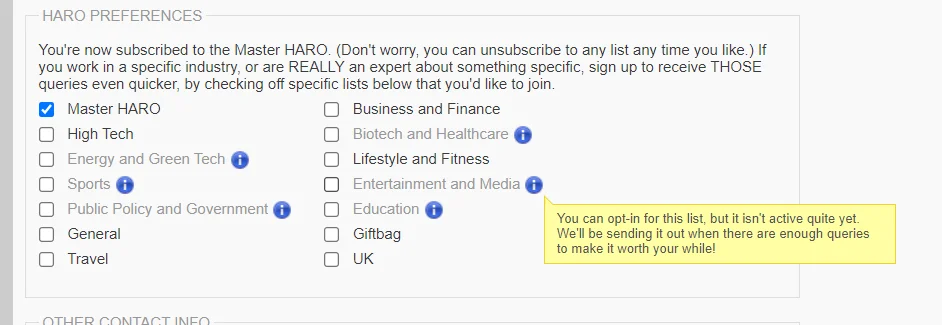
Step 3 – Look for Opportunities
Once you have an account, you can browse through the various opportunities that are available. When you find an opportunity that you’re interested in, click on it to learn more.
Step 4 – Choose Relevant Queries
Not all queries will be relevant to your business or area of expertise. Choose the ones you think can provide valuable insight or a unique perspective.
If you’re still interested in the opportunity, click the “pitch now” button.
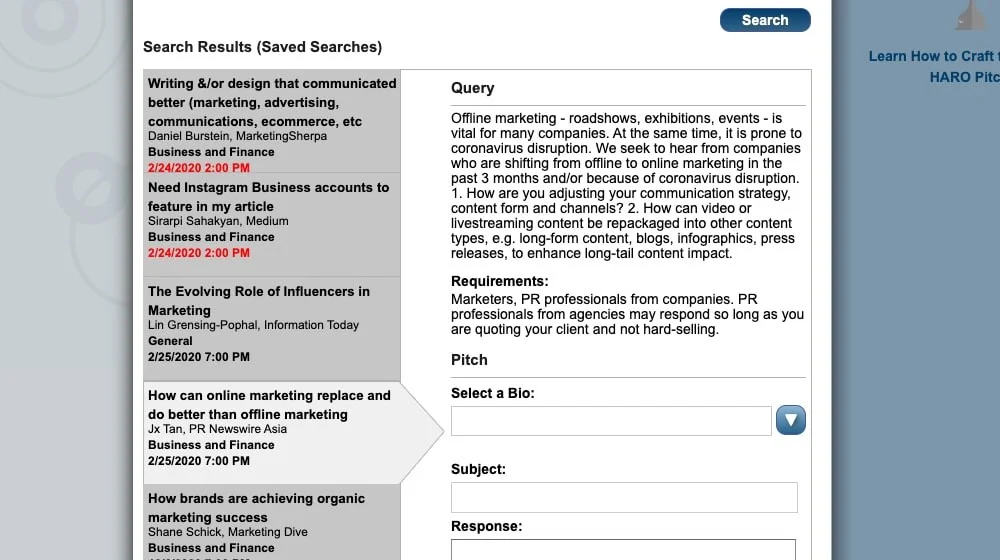
Step 5 – Craft Your Pitch
When you’ve identified a query you want to respond to, the next step is crafting your pitch. You will then be asked to fill out a form with your contact information and a brief description of your qualifications.

Be concise, provide the information requested, add credibility by mentioning your qualifications, and make sure your content is error-free. Your goal should be to provide value to the journalist.
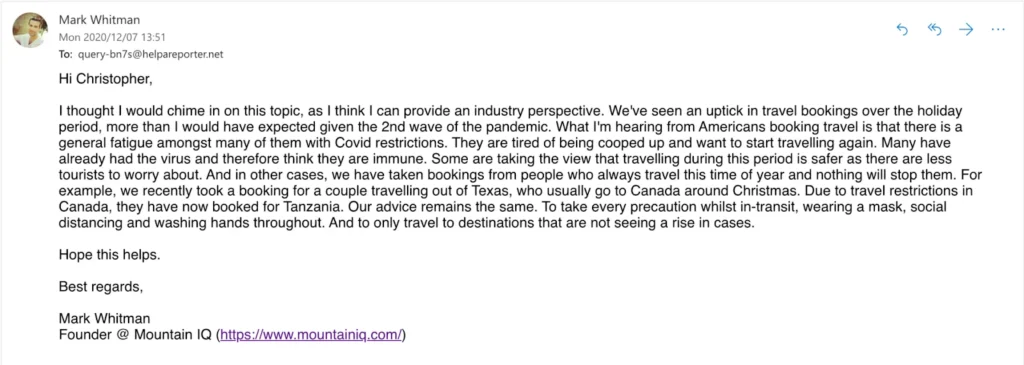
Once you submit the form, your pitch will be sent to the journalist who posted the opportunity. If the journalist is interested in your pitch, they will get in touch with you to discuss further details.
Once your response is ready, reply directly to the email. The subject line should be the query title. Make sure you include your contact details in the response.
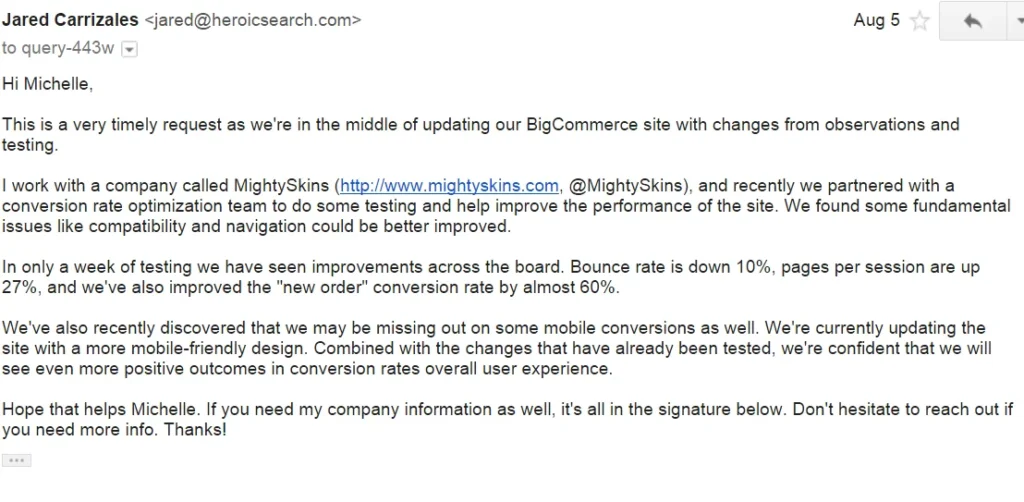
Step 6 – Follow-Up
If you don’t hear back within a week or so, it’s acceptable to send a polite follow-up email. However, don’t be disheartened if you don’t get a response – the competition can be high, and journalists often work under tight deadlines.
Remember, like with any other SEO strategy, success with HARO doesn’t come overnight. It requires patience, persistence, and quality responses. Therefore, make sure to regularly check and respond to queries to increase your chances of getting high-quality backlinks.
9 Tips and Best Practices to Make the Most Out of HARO SEO
To help you make the most out of HARO, consider the following best practices.
1. Be Prompt
When responding to a query, it is important to be prompt. Journalists are often working on tight deadlines, so the sooner you can get your response to them, the better. They may move on to another source if you take too long to respond.
2. Read the Query Carefully
Before responding to a query, be sure to read it carefully and understand what the journalist is looking for. If you don’t understand the requirements of the query, you may waste your time crafting a response that the journalist won’t be able to use.
3. Customize Your Response
When responding to a query, it is essential to customize your response to each journalist’s needs. Generic responses are less likely to be used than those that are tailored to the specific query.
4. Keep Your Response Concise
Your response should be concise and to the point. Journalists often work on tight deadlines and don’t have time to wade through a long, rambling response. Keep your answer short and sweet; you’re more likely to get used.
5. Make Sure Your Response is On-Topic
When responding to a query, ensure your response is relevant and on-topic. If you go off on a tangent, or if your response is not directly related to the query, it’s unlikely that the journalist will use it.
6. Check Your Facts
Before sending your response, be sure to check your facts. If you make any inaccurate statements, it could reflect poorly on you and damage your credibility as a source. Always double-check your facts before hitting send!
7. Use Quotes Sparingly
If you’re going to use quotes in your response, use them sparingly. Too many quotes can make your response seem like filler material, and it’s more likely that the journalist will just use their own words anyway. A few well-chosen quotes can add weight to your response, but don’t overdo it!
8. Include Links When Appropriate
If you have any relevant articles or websites that would help support your response, include links in your email. This will give the journalist additional resources that they can use in their article or story. Just be sure not to include too many links, as this can come across as spammy.
9. Follow-Up
If Necessary If you’ve sent a response to a query and haven’t heard back from the journalist after a reasonable amount of time, it’s ok to follow up with them once or twice. But don’t become a pest! If they’re not interested in using your response, they’ll let you know eventually.
Pitch Templates You Can Try Out
Here are three templates that you can use as a starting point for your HARO pitches. Remember, it’s important to customize each pitch according to the specific query and the journalist’s needs.
Template 1: Expert Opinion Pitch
| Subject Line: Re: [Insert Journalist’s Query Title] Dear [Journalist’s Name], I came across your query in HARO and believe I can provide the expert insights you’re looking for regarding [Topic]. With [Number] years of experience in [Industry/Profession], I’ve [briefly describe your relevant experience or accomplishments]. I feel that this background allows me to provide a unique perspective on [Topic]. [Briefly answer the journalist’s query, providing specific examples or data when possible.] If you’d like any more information or additional insights, I’d be more than happy to assist. Thank you for considering my contribution. Best, [Your Name] [Your Title] [Your Contact Info] |
Template 2: Personal Experience Pitch
| Subject Line: Re: [Insert Journalist’s Query Title] Hi [Journalist’s Name], I’m reaching out in response to your recent query on HARO about [Topic]. I have a personal story that aligns well with your piece. [Share your personal story or experience related to the Topic.] This experience has [describe how this experience affected you or what you learned from it]. I believe this perspective could add a compelling angle to your piece on [Topic]. I look forward to the possibility of contributing to your story. Best Regards, [Your Name] [Your Title] [Your Contact Info] |
Template 3: Case Study Pitch
| Subject Line: Re: [Insert Journalist’s Query Title] Hello [Journalist’s Name], I hope this message finds you well. I read your query on HARO about [Topic], and I’d like to share a case study from my work at [Company Name] that might be of interest. In our recent project, [describe the project, the problem you faced, the solution you implemented, and the results you achieved in brief]. I believe this case study could provide some practical insights for your piece on [Topic]. If you’d like more details or have any questions, feel free to reach out. Kind Regards, [Your Name] [Your Title] [Your Contact Info] |
These are just guidelines, so feel free to modify them as necessary to fit your needs and style. Be concise, be courteous, and remember to provide real value to the journalist for the best chance of getting a response.
Conclusion
In conclusion, HARO SEO is an essential tool for building quality backlinks and should be included as part of any website’s SEO strategy. By ensuring that the queries submitted are catered to media professionals and highlighting specific points in your pitch, the help of HARO can do wonders in increasing links to your website.
Also, as with any strategy, it is essential to weigh the pros and cons before committing. If done right, there’s potential for obtaining great promotion opportunities from collaborating with media organizations.
So if you’re looking for a great way to build meaningful links to your website without breaking the bank, give HARO a try!
You should also keep track of the links you have built so you can easily measure any improvements over time. Monitor the link health and see if any acquired links are broken. You can make use of the broken link checker tool like SuiteJar to keep track of the link status.

